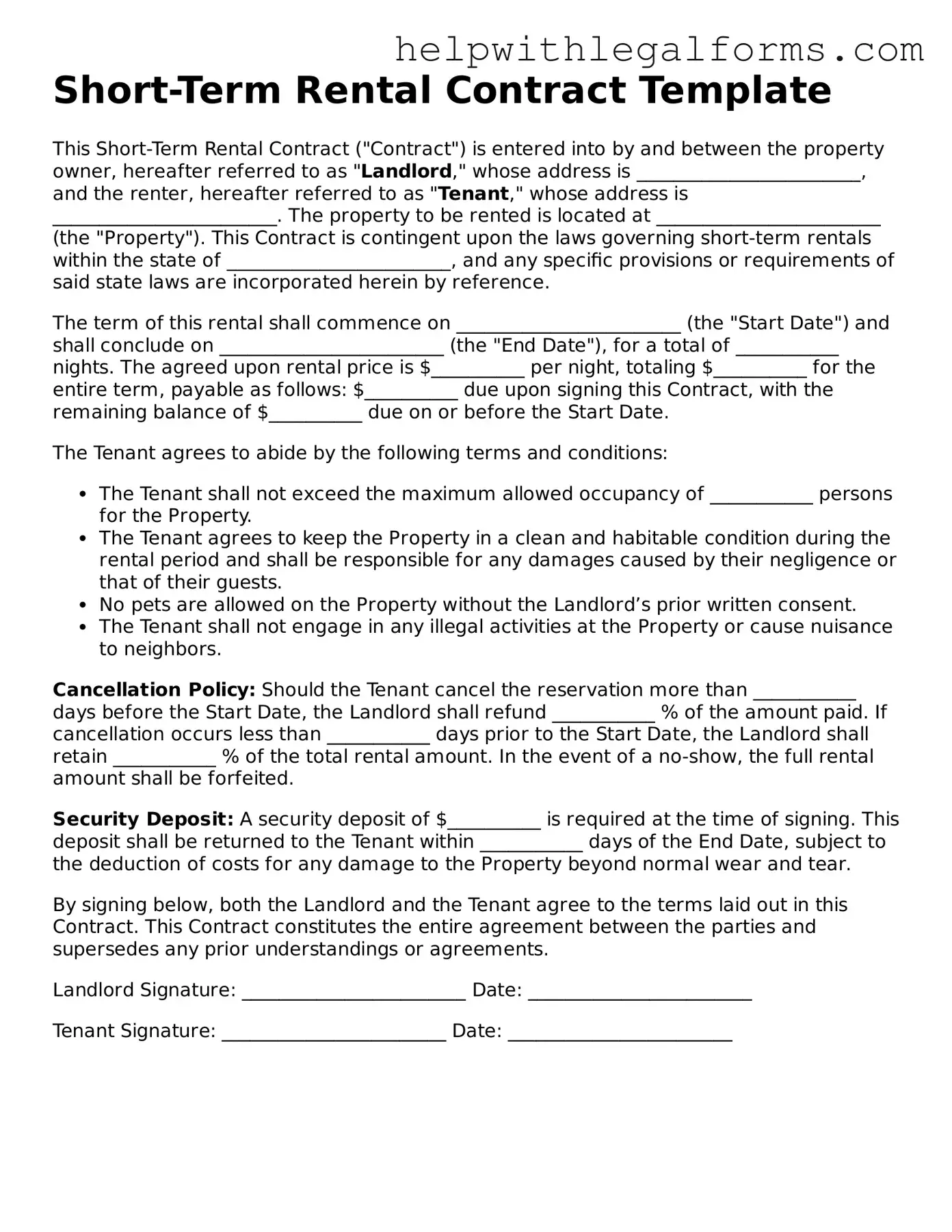Short-Term Rental Contract Template
This Short-Term Rental Contract ("Contract") is entered into by and between the property owner, hereafter referred to as "Landlord," whose address is ________________________, and the renter, hereafter referred to as "Tenant," whose address is ________________________. The property to be rented is located at ________________________ (the "Property"). This Contract is contingent upon the laws governing short-term rentals within the state of ________________________, and any specific provisions or requirements of said state laws are incorporated herein by reference.
The term of this rental shall commence on ________________________ (the "Start Date") and shall conclude on ________________________ (the "End Date"), for a total of ___________ nights. The agreed upon rental price is $__________ per night, totaling $__________ for the entire term, payable as follows: $__________ due upon signing this Contract, with the remaining balance of $__________ due on or before the Start Date.
The Tenant agrees to abide by the following terms and conditions:
- The Tenant shall not exceed the maximum allowed occupancy of ___________ persons for the Property.
- The Tenant agrees to keep the Property in a clean and habitable condition during the rental period and shall be responsible for any damages caused by their negligence or that of their guests.
- No pets are allowed on the Property without the Landlord’s prior written consent.
- The Tenant shall not engage in any illegal activities at the Property or cause nuisance to neighbors.
Cancellation Policy: Should the Tenant cancel the reservation more than ___________ days before the Start Date, the Landlord shall refund ___________ % of the amount paid. If cancellation occurs less than ___________ days prior to the Start Date, the Landlord shall retain ___________ % of the total rental amount. In the event of a no-show, the full rental amount shall be forfeited.
Security Deposit: A security deposit of $__________ is required at the time of signing. This deposit shall be returned to the Tenant within ___________ days of the End Date, subject to the deduction of costs for any damage to the Property beyond normal wear and tear.
By signing below, both the Landlord and the Tenant agree to the terms laid out in this Contract. This Contract constitutes the entire agreement between the parties and supersedes any prior understandings or agreements.
Landlord Signature: ________________________ Date: ________________________
Tenant Signature: ________________________ Date: ________________________
